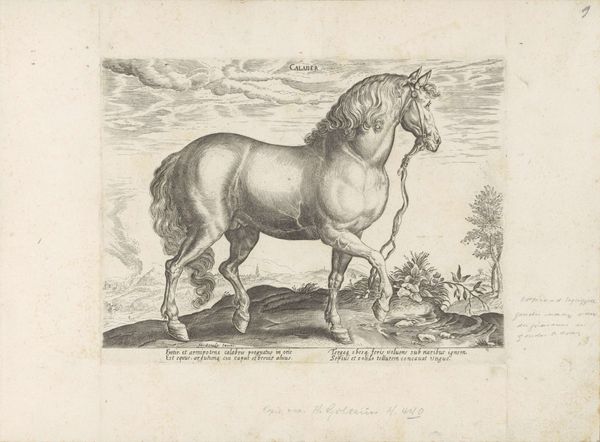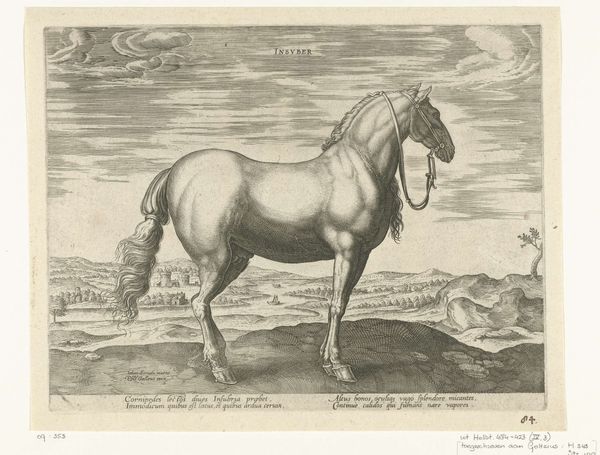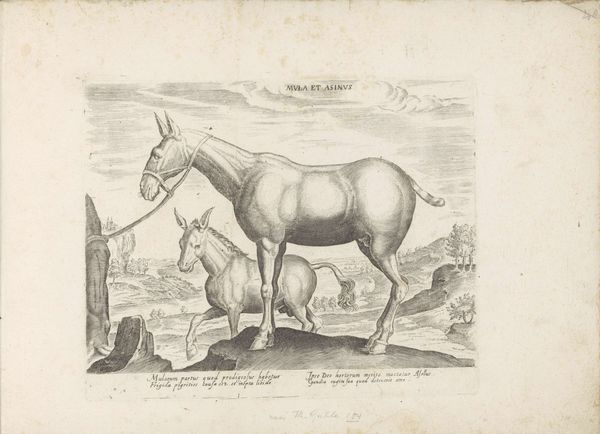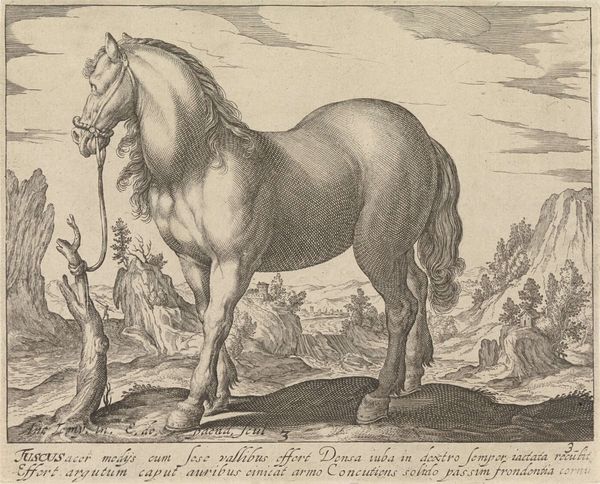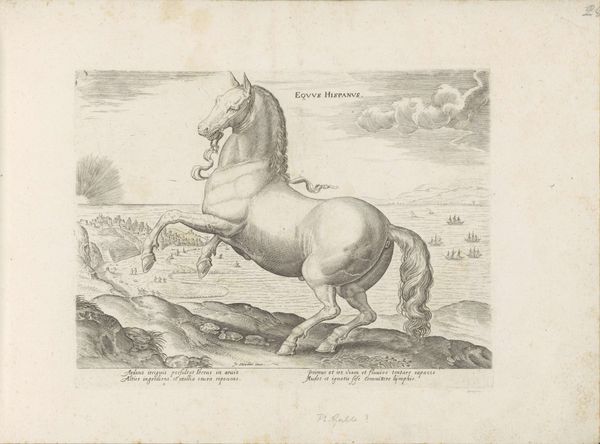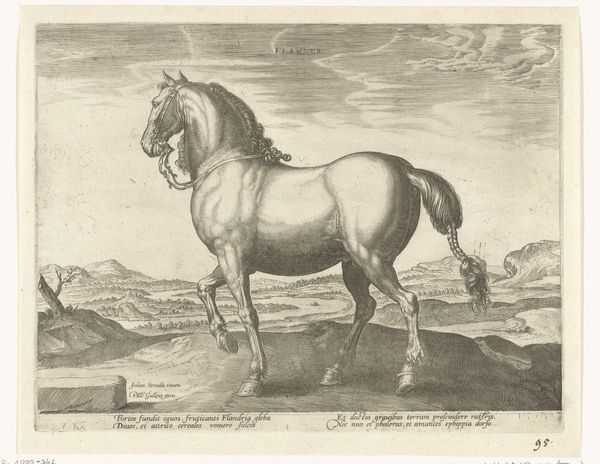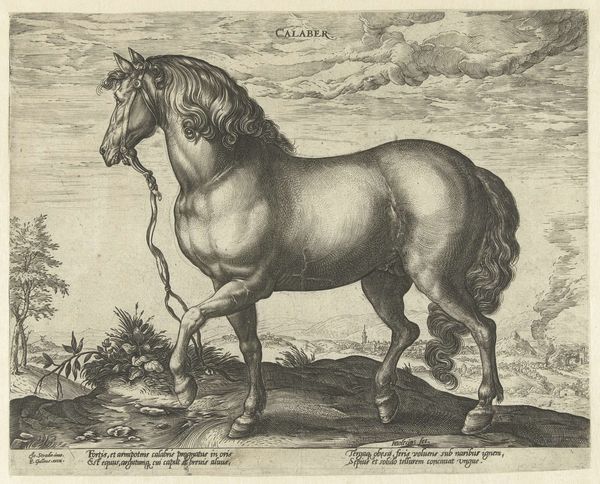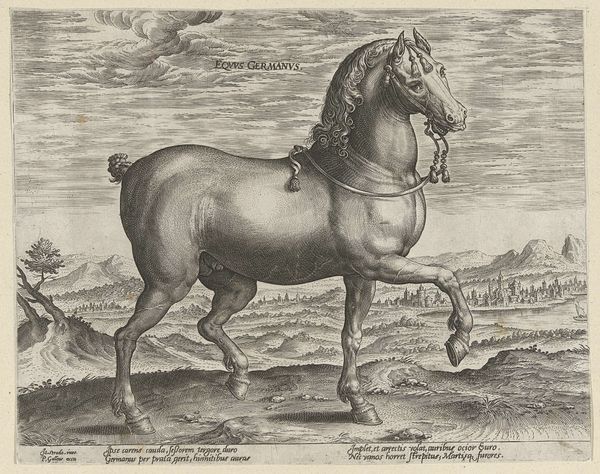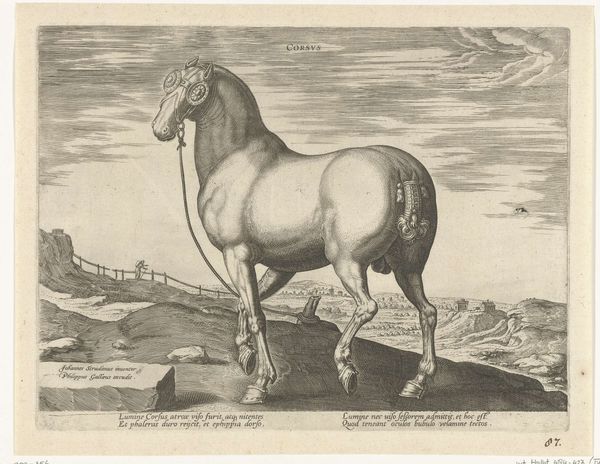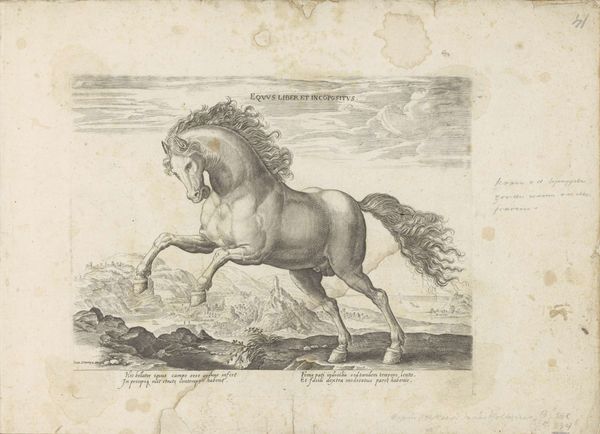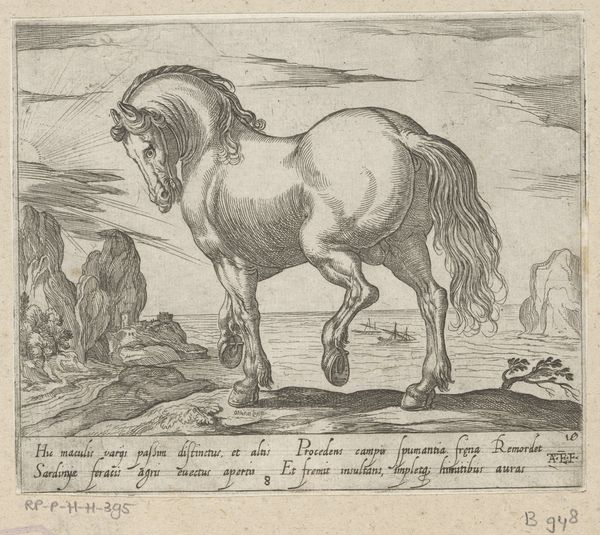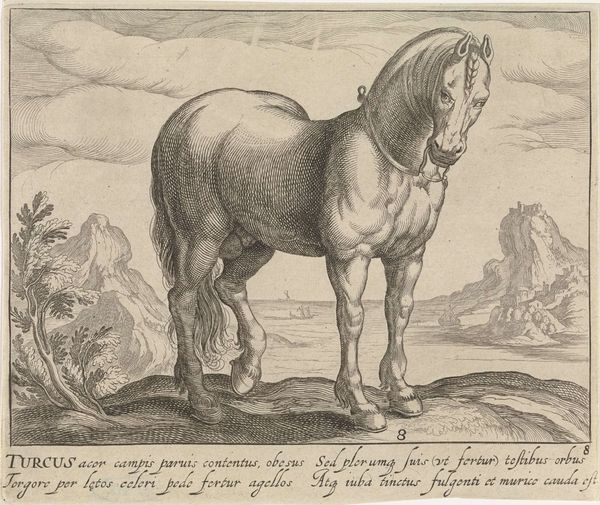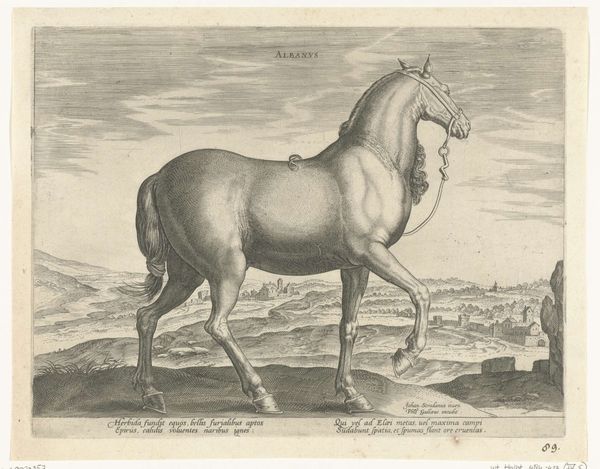
print, etching, engraving
# print
#
etching
#
landscape
#
11_renaissance
#
horse
#
history-painting
#
engraving
#
realism
Dimensions: height 197 mm, width 262 mm
Copyright: Rijks Museum: Open Domain
Editor: So, this print is called "Paard uit Turkije," which translates to "Horse from Turkey." It's an etching and engraving that dates from before 1648 and is held in the Rijksmuseum. I'm immediately struck by the horse's somewhat melancholic stance against the detailed, almost dreamlike landscape. What symbols jump out at you? Curator: The horse itself, of course, is loaded with symbolic weight. Throughout history, the horse has represented power, nobility, and freedom. Its depiction here, standing prominently against a landscape that hints at both civilization and the wild, evokes a complex relationship between the animal, humanity, and nature. Look at the broken branch it holds, seemingly casually. What does that suggest to you? Editor: I hadn't really focused on the branch. Maybe a symbol of something broken or lost? A disruption of the natural order? Curator: Precisely. And notice the backdrop - a blend of pastoral serenity and vague threat. Consider that in the 17th century, Turkey, or the Ottoman Empire, held a very specific cultural and political charge for Europeans. Is the artist suggesting something about the relationship between Europe and the East, perhaps anxieties or aspirations, embodied in this single, magnificent animal? How does this representation diverge or align with common horse imagery? Editor: Well, compared to typical warhorses, it's strangely calm. Less about conquest and more about...observation, maybe? Almost world-weary. Curator: Perhaps. It's a creature caught between worlds – a powerful animal, a symbol of the East, observed and interpreted through a European lens. And that broken branch, a quiet signifier of fragility amidst perceived strength. I appreciate your reading of melancholy - it's a reminder that even symbols of power carry deeper emotional textures. Editor: I see it differently now. What initially appeared as a straightforward depiction of a horse has all these layers of meaning, of history and cultural tension. It makes me consider how symbols are so rooted in their time. Thanks for untangling that!
Comments
No comments
Be the first to comment and join the conversation on the ultimate creative platform.
